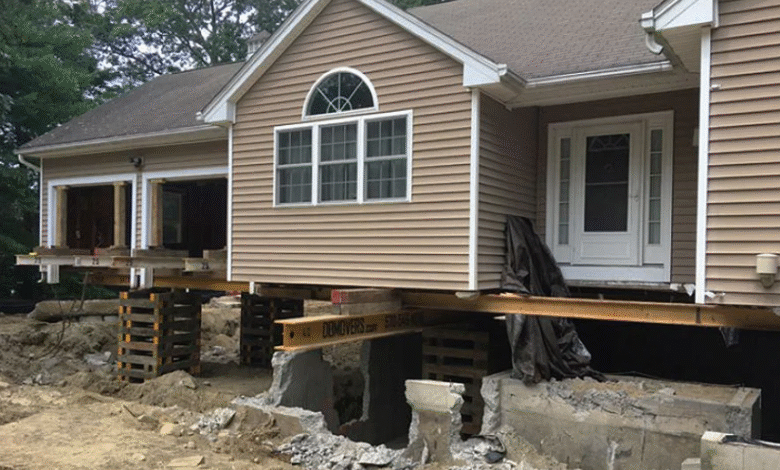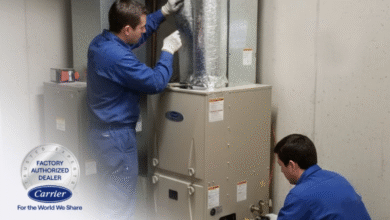Replace Foundation Without Lifting House

If you’re a homeowner dealing with a failing or cracked foundation, you might assume that the only solution involves jacking up your house and performing a full replacement underneath. Fortunately, modern construction techniques have made it possible to replace foundation without lifting house in many cases. This method not only saves time and money but also minimizes disruption to your property. Whether your home is showing signs of settlement, water damage, or structural instability, understanding how foundation replacement can be achieved without lifting the structure is essential for planning the right repair strategy.
This comprehensive guide explains the reasons a foundation may need replacement, the process of doing it without lifting the house, the types of foundations suited for this technique, costs, risks, and how to choose the right contractor.
Understanding Why Foundations Fail
A home’s foundation is its structural backbone. When it begins to deteriorate, every other part of the building is affected. Common causes of foundation failure include:
- Soil Movement: Expansive or clay-heavy soils expand when wet and shrink when dry, exerting pressure on foundation walls.
- Water Damage: Poor drainage or plumbing leaks can erode the soil beneath the foundation.
- Tree Roots: Large roots can grow under and disrupt the stability of the base.
- Poor Construction: Inadequate footing design, low-quality materials, or shortcuts during original construction can cause premature failure.
- Age: Over decades, natural wear and environmental exposure can degrade concrete strength.
When any of these factors cause cracks, sinking, or bowing walls, a foundation replacement may be required.
What Does It Mean to Replace Foundation Without Lifting the House?
Traditionally, foundation replacement involved lifting the house using hydraulic jacks so crews could demolish and rebuild the structure below. This process, while effective, is highly disruptive and expensive.
Replacing a foundation without lifting the house uses modern engineering techniques that allow contractors to work beneath the home while it remains in place. Instead of physically elevating the building, the new foundation is installed section by section, supporting the structure as work progresses.
This approach can involve partial excavation, slab reinforcement, and specialized structural supports that maintain stability throughout the project.
Techniques Used to Replace Foundation Without Lifting the House
Several innovative techniques make it possible to replace or reinforce a foundation while the house remains in position. The right approach depends on your home’s design, soil conditions, and the type of damage present.
1. Underpinning
Underpinning strengthens and stabilizes the existing foundation rather than fully replacing it. Contractors dig beneath the current footing in controlled sections and pour new concrete to extend and reinforce the base.
Advantages:
- Maintains structural integrity throughout the process
- Avoids lifting or moving the house
- Can correct settling and uneven floors
Best for: Homes with partial settling or cracks due to soil movement.
2. Slab Jacking (Mudjacking)
For homes with a concrete slab foundation, slab jacking involves pumping a special grout mixture beneath the slab to raise and stabilize it.
Advantages:
- Quick and cost-effective
- Minimal excavation
- Can be completed in a few hours
Limitations:
- Not ideal for foundations with severe structural damage
- Does not work for pier-and-beam foundations
3. Sectional Foundation Replacement
In severe cases, the entire foundation may need replacement — but it can still be done without lifting the house. Contractors replace small sections at a time while temporary supports (like steel beams or cribbing) hold the load above.
Process Overview:
- Engineers design a replacement plan with load calculations.
- Workers excavate small sections under the house.
- Each section is demolished and repoured with reinforced concrete.
- Temporary supports are shifted as the new foundation cures.
Benefits:
- Maintains house position and stability
- Avoids cracks in walls or ceilings from lifting
- Can accommodate full replacement over time
4. Pier and Beam Reinforcement
In homes with crawl spaces or pier-and-beam systems, new concrete piers or steel piles can be installed alongside existing ones. These provide extra support and can effectively “replace” the foundation’s function without removing the original base.
Advantages:
- Great for homes with accessible crawl spaces
- Reduces structural movement during repairs
- Allows for better moisture and ventilation control
5. Helical or Push Piles
Helical (screw-like) or push piles (steel shafts driven deep into stable soil) can be used to permanently support the structure from below. These piles bypass weak surface soils, transferring the home’s weight to firmer ground layers.
Why It Works:
The piles act as deep anchors, eliminating the need to lift or disturb the house while stabilizing and sometimes even raising it slightly back to level.
Commonly Used In:
- Sloping lots
- Areas with unstable or expansive soil
- Older homes with limited access
Step-by-Step Process: Replacing Foundation Without Lifting the House
Here’s what homeowners can expect during this type of project:
1. Structural Assessment
A structural engineer inspects your foundation and soil conditions. They’ll determine whether a full replacement is necessary or if reinforcement will suffice.
2. Planning and Permits
Detailed blueprints are created, and permits are obtained from local building authorities. The plan must ensure stability throughout the project.
3. Excavation
Crews carefully excavate around the house’s perimeter or crawl space. Small access pits are created for equipment and workers.
4. Temporary Supports
Steel beams or cribbing are installed to support the structure above each work area. This keeps the home safe and stable during the replacement.
5. Sectional Demolition and Pouring
Old foundation sections are removed one at a time. Fresh reinforced concrete is poured and allowed to cure before moving on to the next section.
6. Reinforcement and Waterproofing
Steel reinforcements, vapor barriers, and drainage systems are installed to prevent future problems.
7. Final Inspection
Once complete, engineers and local inspectors verify that the foundation meets structural and safety codes.
See also: Budget-Friendly Solutions for Home Makeovers
Cost of Replacing Foundation Without Lifting the House
The cost depends on factors like foundation type, soil conditions, and local labor rates. However, here’s a general estimate:
| Foundation Work Type | Typical Cost Range (USD) |
| Minor Underpinning Repairs | $5,000 – $15,000 |
| Partial Section Replacement | $15,000 – $35,000 |
| Full Foundation Replacement (No Lifting) | $30,000 – $80,000 |
| Helical or Push Pile Installation | $10,000 – $40,000 |
| Slab Jacking | $1,000 – $6,000 |
Although replacing a foundation without lifting the house may seem costly, it is often 30–50% less expensive than traditional lift-and-replace methods.
Pros and Cons
Advantages
- Lower Cost: No need for jacking equipment or relocation of the structure.
- Reduced Damage: Prevents cracking of walls, ceilings, and interior finishes.
- Faster Turnaround: Many projects finish within weeks rather than months.
- Less Disruption: You can often remain in your home during construction.
Disadvantages
- Limited Access: Working beneath the structure can be challenging.
- Not Suitable for Every Foundation: Severe damage may still require lifting.
- Moisture Exposure: Proper waterproofing is crucial to prevent future issues.
Foundation Types Best Suited for This Method
- Concrete Slab Foundations: Perfect candidates for mudjacking or sectional replacement.
- Crawl Space (Pier and Beam): Easy to reinforce with new piers or beams.
- Basement Foundations: Can sometimes be replaced in sections, but access is more complex.
Homes on steep slopes or with extremely unstable soils may still require partial lifting, but engineers can often minimize the lift height drastically.
Signs You Might Need This Service
If you notice any of the following issues, it’s time to consult a structural engineer about replacing your foundation:
- Cracks in walls, floors, or exterior bricks
- Doors or windows sticking or misaligning
- Uneven or sloping floors
- Water pooling near the foundation
- Visible separation between foundation and house framing
Catching these signs early can prevent more extensive and expensive repairs later.
Common Myths About Foundation Replacement
Myth 1: You must always lift a house to replace its foundation.
Reality: Many homes can have their foundations repaired or replaced in place using sectional and underpinning methods.
Myth 2: Foundation replacement means you have to move out for months.
Reality: Most homeowners can stay during the process, especially when work is done in sections.
Myth 3: All cracks mean you need a new foundation.
Reality: Hairline cracks can often be repaired; replacement is only for severe cases.
Myth 4: You can DIY foundation work.
Reality: Foundation replacement is complex and requires engineering expertise, safety equipment, and permits.
How to Choose the Right Contractor
Choosing a qualified contractor ensures the stability and safety of your home. Here’s what to look for:
- Engineering Partnerships: The company should work with or have licensed structural engineers on staff.
- Experience with Non-Lift Replacements: Not all contractors offer this specialized service.
- References and Reviews: Ask for before-and-after photos and testimonials.
- Insurance and Licensing: Verify credentials and liability coverage.
- Written Warranty: Quality contractors back their work for 10–25 years.
Preventing Future Foundation Problems
After replacing or reinforcing your foundation, take preventive measures to extend its life:
- Ensure Proper Drainage: Install gutters, downspouts, and grading that direct water away.
- Control Vegetation: Keep trees and shrubs away from the foundation.
- Monitor Soil Moisture: Use soaker hoses during dry seasons to maintain consistent soil moisture.
- Inspect Regularly: Check for new cracks or shifts annually.
Case Example: Foundation Replacement Without Lifting a 1950s Home
A 1950s ranch home in a clay-heavy region of Texas showed severe corner settlement and interior cracks. Engineers determined that the original concrete slab had deteriorated due to moisture changes.
Solution:
Instead of lifting the entire house, the contractor used sectional replacement and helical piles. They replaced 10-foot foundation segments one by one, inserting piles under each new section to anchor it to stable soil.
Outcome:
- Project completed in 7 weeks
- Home remained fully habitable
- No cracks appeared in walls or floors
- Cost: $48,000 (40% cheaper than a full lift-and-replace)
This demonstrates how modern techniques make full foundation replacement achievable without lifting the structure.
Conclusion
Replacing a foundation is one of the most significant projects a homeowner can face — but it doesn’t have to mean lifting your house sky-high. With advancements in structural engineering, it’s now possible to replace foundation without lifting house safely, efficiently, and economically. Whether your property is suffering from settling, cracking, or water intrusion, these modern solutions offer stability and longevity with far less disruption.
Consult a licensed engineer and a foundation specialist experienced in non-lift methods to determine the best approach for your situation. In many cases, you can restore your home’s strength and value — all without ever moving it an inch.




